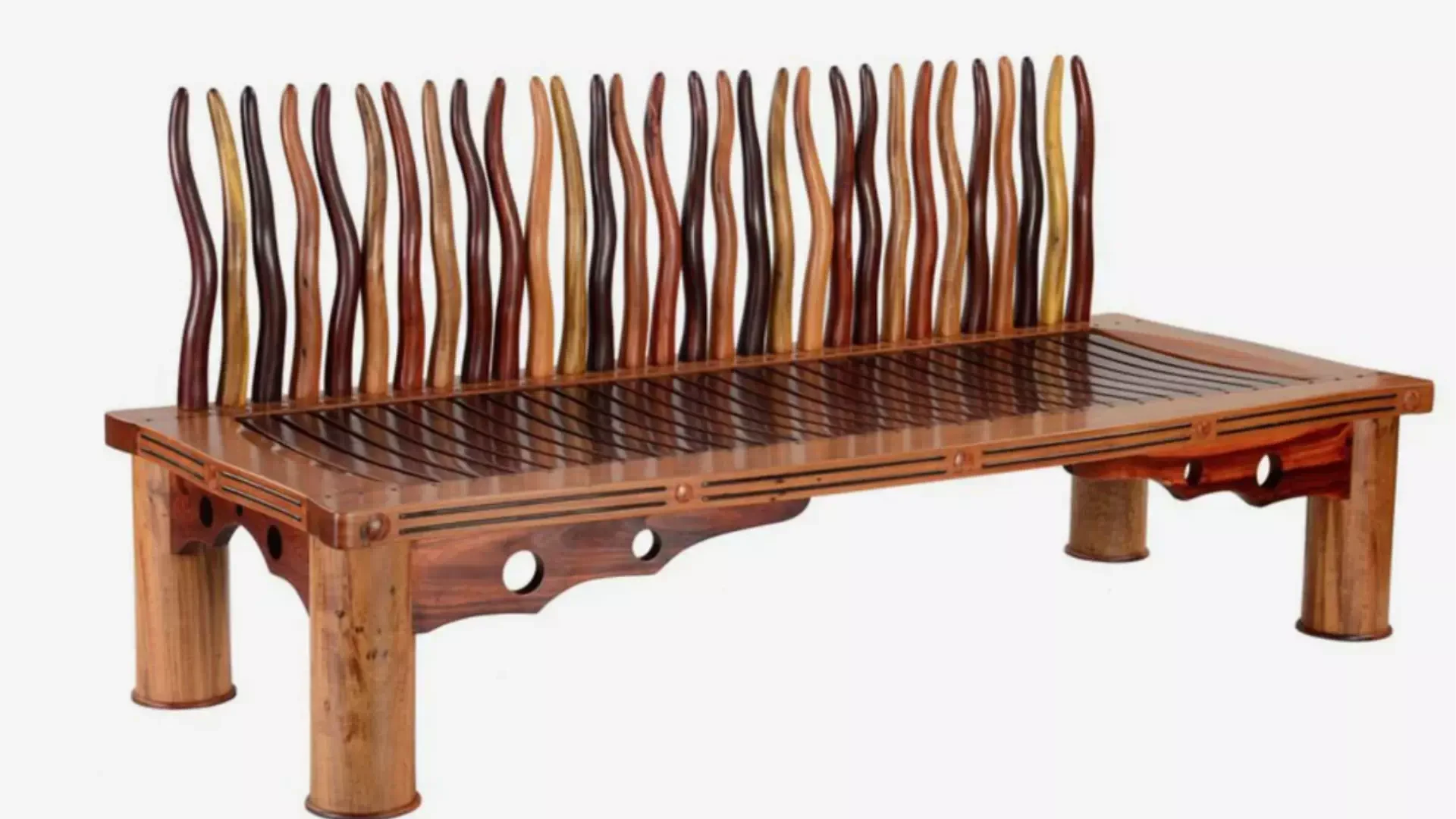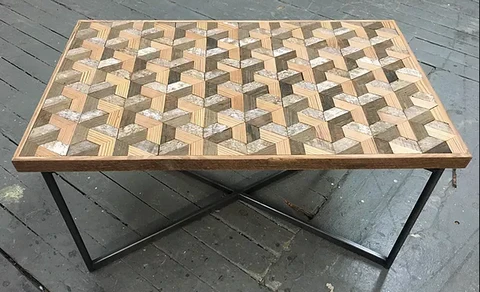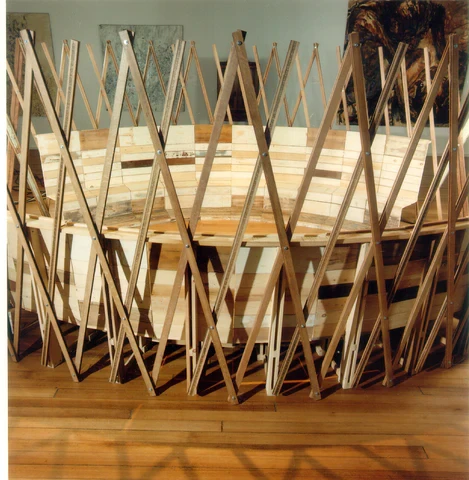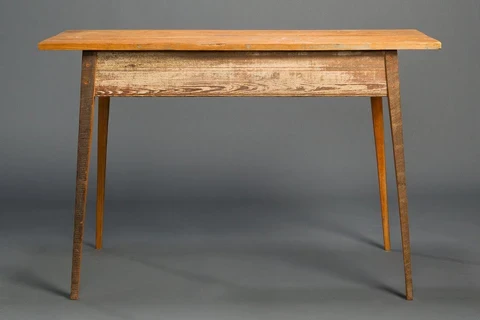
From Reclaimed Wood to Furniture
28-Jul-2021
Series > Reclaimed Wood: Beyond the Basics
Part 3. From Reclaimed Wood to Furniture
Capers Cauthen of Landrum Tables candidly admits that when he looks at a piece of freshly cut new lumber, ready to be crafted into a piece of furniture, he thinks, “boring.” Not that there isn’t a purpose and function for new wood, but it’s missing something: a story. “There’s no legacy to the furniture,” Cauthen says of pieces made from fresh lumber. “But when you’re using a piece of reclaimed wood -- those are inspirational.”
In the past two articles, we’ve addressed the terminology and history of wood in the United States. In this piece, we focus on several talented artisans and how they transform historical, reclaimed lumber into beautiful, functional pieces of furniture. We talked to experienced reclaimed furniture-makers to better understand the building process and how they gain inspiration from the material itself.
Sourcing Reclaimed Wood
Many have an image of reclaimed furniture-makers jumping into back-alley dumpsters to source materials. While this is a method for retrieving used wood, it is only one of many. Yoav Liberman, author of Working Reclaimed Wood: A Guide for Woodworkers, Makers & Designers, lists the various places he finds reclaimed lumber: backsides of factories, neighbor’s front-yards on trash day, makers and woodworkers’ shops, Craigslist, and good old fashioned lumber yards.
For Capers Cauthen, reclaimed wood is found through partnerships with construction companies in Charleston, SC. The city is in the middle of a real estate boom, so renovation is rampant. With his connections to contractors and through his own experience in construction, Cauthen receives a stream of reclaimed wood, mostly 150 to 200-year-old antique pine, and black and bald cypress, to turn into furniture.

“Geometric Pattern” by Victor Valencia for Valencia Designs. Made of reclaimed heart pine.
Preparing the Wood
Turning reclaimed wood into furniture is a highly involved process and can often drive up the cost and time needed to build a piece. Doing it well requires a lot of attention to detail and a strong understanding of the challenges of using old or discarded lumber.
Once the lumber has been found, for instance, several safety measures must be taken to make the material usable. These steps vary depending on the extent of change a furniture designer is seeking. Liberman notes the need for a good metal detector to find all of the hidden hardware within the wood, while Cauthen explains, “A lot of furniture I have, nails are still in the wood. It’s part of the story of the wood…I try not to cut one inch off if I [don’t] have to.” At Landrum Tables, craftsmen move around the hardware to create individuality in a piece, celebrating the material’s storied past.

“Temporary Room” by Evan Markiewicz. Made of tongue and groove oak strip flooring and painted pine flooring in 1994.

Moisture can also be a hindrance to reclaimed wood furniture. “First thing you should do is have a moisture meter,” Liberman explains. “If the wood is too high in moisture, it’s not ready for any sort of projects in woodworking.” 12% moisture or below is the target range for usable wood, and there are a variety of methods to get it to that point. Liberman mentions kilns, steam chambers, dry attics, and microwaves. Reclaimed wood is old and so has been subject to warping and bending from humans, water, weather, and plain old age. It is necessary to stabilize the wood so that it won’t warp again. Kiln-drying can also kill any kind of insect infestation.
Bugs, however, though destructive to lumber used in buildings, can be a source of inspiration in disguise. Liberman says, “I found a big beam in the dumpster that was close to an old farm building...part of it was a constructional beam and part of it was consumed by termite work…I wanted to preserve their work and showcase it because it was so beautiful.”
Liberman created P:91, a totem (pictured below) whose base is riddled with flaky designs carved out by termites. At the top of the pole, Liberman had his artist friend Steff Rocknack whittle a set of wings, integrating seamlessly into the insects’ work.

“P:91” by Yoav Liberman with Steff Rocknak. Made of found pine beam, reclaimed cedar, found bronze mailbox door, Israeli cypress, reclaimed concrete crag in 2011.
Every artisan's painstaking preparation method is evident in the beauty and uniqueness of each reclaimed piece. The paint, insects, hardware, divots, and scars that the wood has bore for decades influence these distinctive styles.
From Stories to Furniture
The emotions and stories behind each scrap piece or plank of wood is what makes the production of reclaimed furniture so meaningful.
Cauthen shares the difference between what he terms ‘historical wood’ and ‘wood with history.’ For the former, he tells the story of finding historically significant lumber when a friend dug up a rice trunk built of purple heart pine in the Hobonny Plantation in South Carolina. These rice trunks were designed to irrigate rice fields in the South by raising or lowering gates to flood and drain the paddies. Rice trunks are specific to South Carolina, as massive rice plantations were maintained and harvested there by enslaved peoples, who had brought this mechanism from West Africa.
When Cauthen found it, the rice trunk was covered in barnacles and smelled like mud. He dried the purple heart pine for two years and then turned it into a house-full of furniture for his friend.
Wood with history, by contrast, can be shown in the beams pulled from the Bob Ellis building in downtown Charleston. “All of a sudden,” Cauthen says, “I've got 300 beams from a building that former presidents have probably walked in.” The lumber dated back to 1860.
These stories stimulate Cauthen when building furniture for Landrum Tables. “What would inspire me are the characteristics of the wood, how it’s weathered, the structural integrity,” explains Cauthen. He likes to stick to straight lines and angular designs because it’s the “path of least resistance” for preparing the wood, while still bringing inspiration to the piece through the many lives the lumber has lived.

“Signature Console Table” by Landrum Tables. Made from reclaimed heart pine with a white wash and natural wax finish.
Reclaimed wood’s individuality motivates Cauthen, Liberman, and many other furniture designers to feature the lumber’s history in the pieces they create. More and more, these artisans are choosing to honor reclaimed wood and call attention to its life through every crack, nail, insect, and splinter. As Liberman says, “You celebrate the raw and make it sublime.”
To further explore this topic, watch Yoav S. Liberman's keynote address below on Working Reclaimed Wood.
---
By Danya Rubenstein-Markiewicz, mebl | Transforming Furniture
Read the other articles in the Reclaimed Wood: Beyond the Basics series.
References:
Top photo credit: Benji Reyes, “Idlipan Bed,” backrest is made from various species of reclaimed wood; the bed frame is from a 2” x 12” yakal beam and the slats are made from ipil, legs made from molave and bracing made from balayong.
Carney, Judith A., Black Rice: The African Origins of Rice Cultivation in the Americas, Harvard University Press, 2002
Cauthen, Capers, “Signature Console Table,” Landrum Tables, reclaimed heart pine with a white wash and natural wax finish, 56 x 18 x 31 inches.
Liberman, Yoav, “P:91 – from decomposition to anticipation to exultation,” Yoav Liberman Design, found pine beam, reclaimed cedar, found bronze mailbox door, israeli cypress, reclaimed concrete crag, 91 x 16 x 11 inches, 2011.
Liberman, Yoav, Working Reclaimed Wood: A Guide for Woodworkers, Makers & Designers, Popular Woodworking Books, 2018.
Markiewicz, Evan, “Temporary Room,” tongue and groove oak strip flooring and painted pine flooring, 1994.
Valencia, Victor, “Geometric Pattern,” Valencia Designs, reclaimed heart pine.
“Monster Island,” Noble Goods, reclaimed fir or solid walnut and resin.
